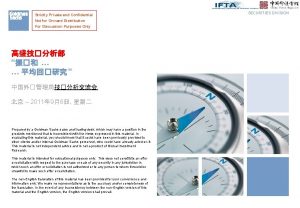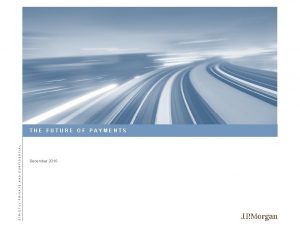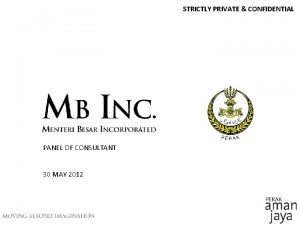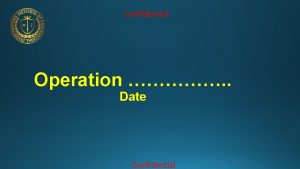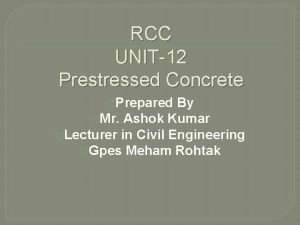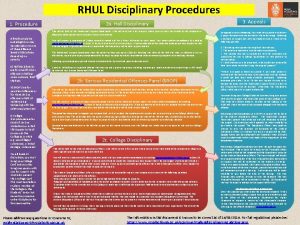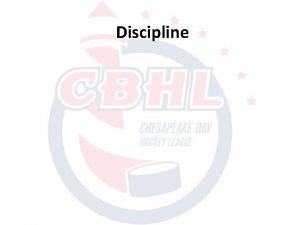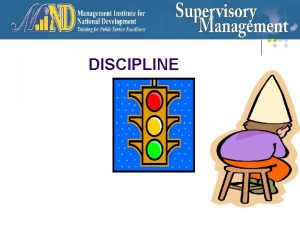Discipline and Disciplinary Procedure Unit12 Confidential Discipline According















- Slides: 15

Discipline and Disciplinary Procedure Unit-12 Confidential

Discipline • According to Dictionary of Human Resource Management: • Discipline is the process of setting and enforcing acceptable standards of behaviour within the employing organization, in many cases through the medium of a formal disciplinary procedure. Confidential

Discipline • According to Dr. Spriegal: • "discipline is the force that prompts an individual or a group to observe the rules, regulations and procedures which are deemed to be necessary to the attainment of an objective; it is force or fear of force which restrains an individual or a group from doing things which are deemed to be destructive of group objectives. It is also the exercise of restraint or the enforcement of penalties for the violation of group regulations". Confidential

Aims and Objectives of Discipline 1. To obtain a willing acceptance of the rules, regulations and procedures of an organization. 2. To impact an element of certainty despite several differences in informal behaviour patterns. 3. To develop among the employees a spirit of tolerance and a desire to make adjustments. Confidential

Aims and Objectives of Discipline 4. To give and seek direction, and responsibility. 5. To create an atmosphere of respect for the human personality and human relations. 6. To increase the working efficiency and moral of the employees, so that their productivity is stepped up, the cost of production brought down and the quality of production improved. Confidential

Principles for Maintenance of Discipline 1. As far as possible, all the rules should be framed in co-operation and collaboration with the representatives of employees. 2. All the rules should be appraised at frequent and regular intervals to ensure that they are, and continue to be, appropriate sensible and useful. Confidential

Principles for Maintenance of Discipline 3. Rules should vary with changes in the working conditions of employees. Those framed for office employees, for example, may very well be different from those that are formulated for workers in an industrial concern. 4. Rules should be uniformly enforced if they are to be effective. They must be applied without exception and without bending them or ignoring them in favour of any one worker. Confidential

Principles for Maintenance of Discipline 5. Penalties for any violation of any rule should be clearly stated in advance. Employees have the right to know what to expect in the event of any infringement of a rule or regulation. For this purpose, it is better to publish them in the employees' handbook. 6. A disciplinary policy should have as its objective the prevention of any infringement rather than the simple administration of penalties, however just: it should be preventive rather than punitive. Confidential

Principles for Maintenance of Discipline 7. Extreme caution should be exercised to ensure that infringements are not encouraged. This should be done as a matter of policy. 8. If violations of a particular rule are fairly frequent, the circumstances surrounding them should be carefully investigated and studied in order to discover the cause or causes of such violations. Confidential

Principles for Maintenance of Discipline 9. Recidivism must be expected. Some offenders would almost certainly violate rules more often than others. These cases should be carefully considered so that their causes may be discovered. 10. Definite and precise provisions for appeal and review of all disciplinary actions should be expressly mentioned in the employees' handbook for collective agreements. Confidential

Guidelines of a Disciplinary Action • Location of responsibility. • Proper formulation and communication of rules. • Rules and regulations should be reasonable • Equal treatment. • Disciplinary action should be taken in private. • Importance of promptness in taking disciplinary action. • Innocence is presumed. • Get the facts. Confidential

Guidelines of a Disciplinary Action • Action should be taken in cool atmosphere. • Natural justice. • After a disciplinary action has been taken by the supervisor, he should treat his subordinate in a normal manner. • Don't back down when you are right. • Negative motivation should be handled in a positive manner. Confidential

Disciplinary – Action Penalties 1. Oral reprimand 2. Written reprimand 3. Loss of privileges 4. Fines 5. Lay off 6. Demotion 7. Discharge Confidential

Procedure for Disciplinary Action • An accurate statement of the disciplinary problem. • Collection of data or facts bearing on the case. • Selection of tentative penalties to be imposed. • Choice of the penalty. • Application of the penalty. • Follow-up on the disciplinary action. Confidential

Dismissal of an Employee 1. 2. 3. 4. 5. Charge Sheet is Framed and Issued. Receipt of Explanation Issue of Notice of Enquiry The Holding of Enquiry The Findings Confidential
 Disciplinary reflexivity
Disciplinary reflexivity Brianmac poms
Brianmac poms Disciplinary knowledge
Disciplinary knowledge Disciplinary curriculum
Disciplinary curriculum Disciplinary literacy in physical education
Disciplinary literacy in physical education Kentucky nursing laws
Kentucky nursing laws Frisk employee discipline
Frisk employee discipline Uta disciplinary probation
Uta disciplinary probation Strictly private and confidential 中文
Strictly private and confidential 中文 Confidential do not copy or distribute
Confidential do not copy or distribute Strictly private and confidential
Strictly private and confidential Confidential & proprietary
Confidential & proprietary Strictly private & confidential
Strictly private & confidential Microsoft has second internaluseonly
Microsoft has second internaluseonly Strictly private and confidential
Strictly private and confidential Confidential company hyderabad
Confidential company hyderabad








